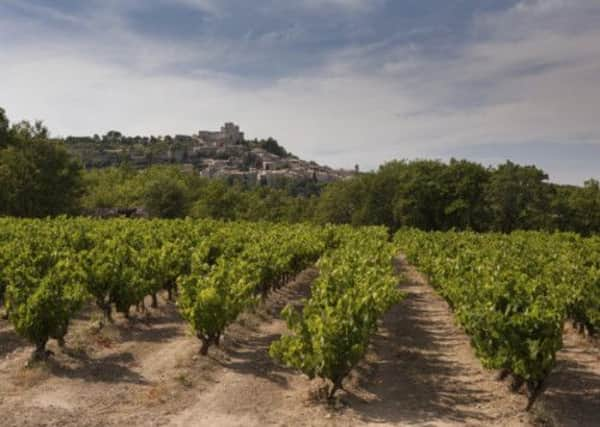Wine: Vines growing at Ménerbes


One day, a British couple knocked on the door of the cellar. They had just bought a holiday house in the pretty walled village of Ménerbes and wanted to taste Bastide de Marie’s wine. Their daughter was due to be married and they were looking for a suitable Provençal rosé from the local area to serve at the wedding.
Unknown to Samour, his visitor was politician and financial business guru, Lord Mervyn Davies of Abersoch. Like Samour, Davies had a fascination for wine – having discovered it in his early 20s, he had become a regular investor in fine wines – his first purchase being a bottle of 1963 Dow’s port. Davies had also dreamed of owning his own vineyard one day.
Advertisement
Hide AdAdvertisement
Hide AdThe two men found that they had something else in common. Davies’ wife and Alexandre’s daughter have the same name – Jeanne – which means “divine gift from God”.
Davies, so impressed with Samour’s winemaking talent, concocted a plan that Samour would search for suitable vineyards for Davies to buy – and they would make a wine range together under their own label: Domaine des Jeanne.
Three years on, 2,000 bottles of the first wine from their new wine venture have just appeared on the market. Not surprisingly, the first wine is a dry pink made from a typical Provençal blend of grenache, syrah and clairette grown in nearby Ménerbes and Oppede vineyards.
Their first purchase had been five hectares of vineyard, which included 50 and 25-year-old grenache vines, near the Rhône border. The first wine was made using facilities at nearby vigneron Veve Florian winery, while the new winery equipment for Domaine des Jeanne was being installed.
They planned to make a serious Rhône-like red (due 2014) with assistance from Châteauneuf du Pape winemaker Serge Mouriesse – as well as a white Vermentino in 2017 when the young white vines mature – and an olive oil.
Provence conjures up images of a rich man’s playground full of expensive wine estates like Château Mireval, owned by celebrities Brad Pitt and Angelina Jolie. Beautiful Ménerbes village, surrounded by lavender fields and gnarled vines in the foothills of the Alps, where Davies had bought his home is itself a famous hideout for artists and celebrities. One of Picasso’s models had lived here, the notorious Marquis de Sade had a castle nearby and author Peter Mayle’s book A Good Year had been filmed nearby.
In terms of wine, Luberon’s potential is yet to be explored. Well known for undemanding rosés – served up to a thirsty tourist trade, there are still not enough estates focusing on serious white or red wines, despite a long wine history dating back 2,600 years.
There is a ready market for rosés, with prices often too steep in relation to quality. The red wines made from Luberon’s gnarled Mistral-blown vines are still harsh and austere – so this is where the real challenge for Davies and Samour will be – with the reds.
Advertisement
Hide AdAdvertisement
Hide AdOf all Provençal vineyards, Luberon is perhaps one of the most undervalued. It was once heavily dominated by co-operatives, but investment is starting to trickle in with serious wine investors keen to discover the potential of the limestone calcareous soils. A small band of estates like Château Val Joanis, Domaine Canorgue and Château Mille is already leading the way.
Welshman Davies realised that his new Luberon pink had to compete in a busy rosé market. It needed to stand out with a distinctive flavour and enticing packaging.
As trustee of the Royal Academy of Arts he had met artist Professor Paul Huxley, who was treasurer on the committee. Huxley, one time visiting lecturer at Glasgow School of Art, was known for his striking images of flat colour fields, collage and chiaroscuro – represented in his murals in London’s King’s Cross station.
Davies challenged Huxley to create a new label for his wine range in keeping with Ménerbes’ artistic heritage – and the result is a rather unusual striking colourful modern design.
Domaine des Jeanne, www.domainedesjeanne.com